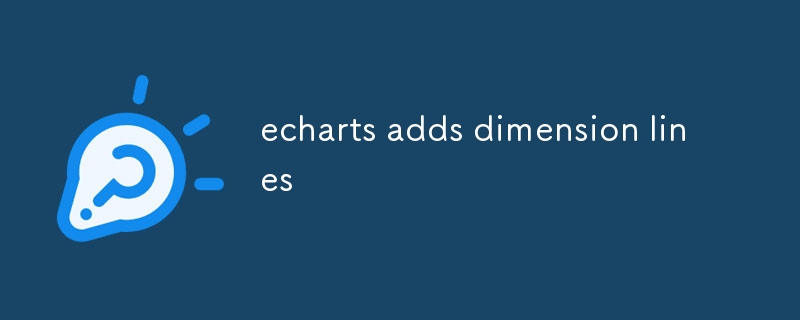
Cet article couvre les méthodes et propriétés d'ajout de lignes d'annotation aux graphiques Echarts. Il explique comment positionner leurs points de début et de fin, ainsi que personnaliser leur apparence et leur texte. L'accent est mis sur l'utilisation de addAnnotationLine() m

Pour ajouter une ligne d'annotation à un graphique Echarts, utilisez addAnnotationLine() méthode. Cette méthode prend deux paramètres : un objet spécifiant la configuration de la ligne et l'instance du graphique.addAnnotationLine() method. This method takes two parameters: an object specifying the line's configuration, and the chart's instance.
Here's an example of how to use the addAnnotationLine() method:
<code class="javascript">const myChart = echarts.init(document.getElementById('myChart'));
const line = {
type: 'line', // 'line', 'curve'
x: [10, 20], // Coordinates of the line's starting and ending points.
y: [10, 20],
symbol: ['none', 'none'], // Symbols at the starting and ending points.
label: { // Label attached to the line.
show: true,
formatter: 'annotation line'
}
};
myChart.addAnnotationLine(line);</code>The starting and ending points of an annotation line can be positioned using the x and y
addAnnotationLine() :
<code class="javascript">const line = {
x: [10, 20],
y: [10, 20]
};</code>x et y de l'objet de configuration de la ligne. Chaque propriété accepte un tableau de deux nombres, représentant les coordonnées X et Y du point.Par exemple, la configuration suivante positionne la ligne pour qu'elle commence à (10, 10) et se termine à (20, 20) :<code class="javascript">const line = {
lineStyle: {
color: 'red',
width: 2
},
symbol: ['circle', 'circle'],
label: {
show: true,
formatter: 'Custom Annotation Line'
}
};</code>Ce qui précède est le contenu détaillé de. pour plus d'informations, suivez d'autres articles connexes sur le site Web de PHP en chinois!
 Comment utiliser DataReader
Comment utiliser DataReader
 Solution pour diviser le tableau de mots en deux pages
Solution pour diviser le tableau de mots en deux pages
 Introduction aux touches de raccourci de capture d'écran dans Win8
Introduction aux touches de raccourci de capture d'écran dans Win8
 Que faire s'il n'y a pas de curseur lorsque vous cliquez sur la zone de saisie
Que faire s'il n'y a pas de curseur lorsque vous cliquez sur la zone de saisie
 Introduction à l'utilisation de Rowid dans Oracle
Introduction à l'utilisation de Rowid dans Oracle
 Explication détaillée de la configuration de nginx
Explication détaillée de la configuration de nginx
 Comment résoudre le code tronqué de securecrt
Comment résoudre le code tronqué de securecrt
 Pourquoi swoole peut-il résider en mémoire ?
Pourquoi swoole peut-il résider en mémoire ?